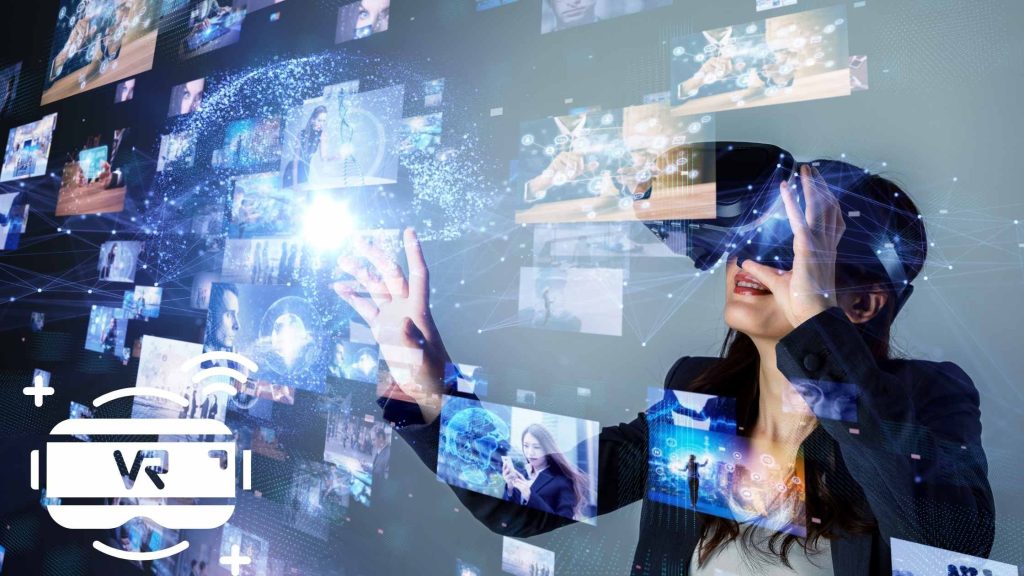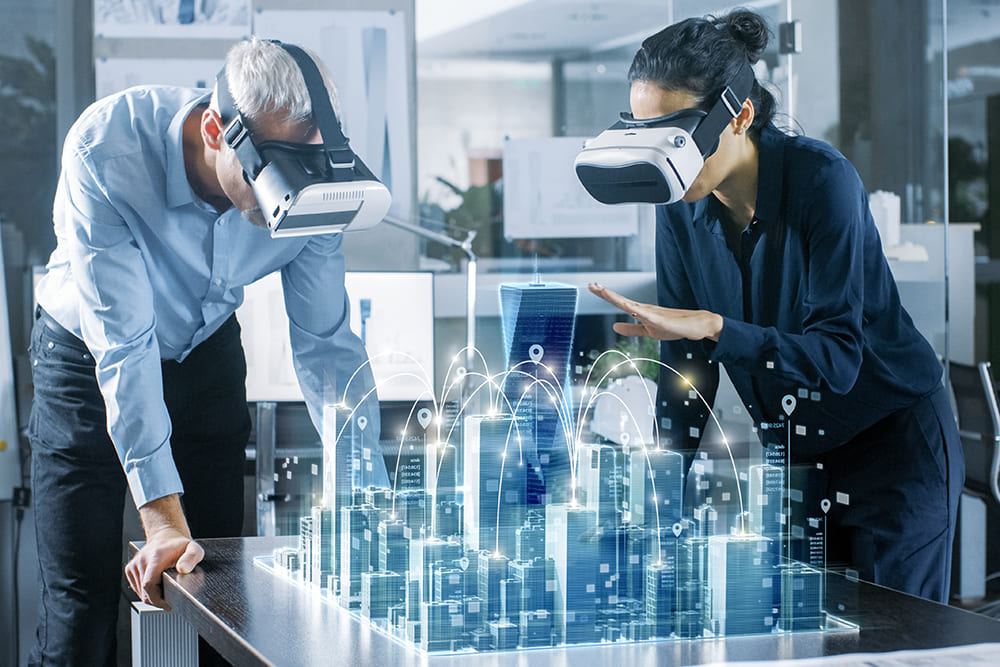Embark on a journey into the future of digital lifestyle and virtual reality, where innovation meets everyday activities in unprecedented ways. From revolutionizing education to transforming entertainment, explore the endless possibilities that this dynamic duo brings to our lives.
The Impact of Virtual Reality on Digital Lifestyle

Virtual reality (VR) has rapidly emerged as a transformative technology that is reshaping the future of digital lifestyle. By providing immersive experiences and interactive environments, VR is revolutionizing the way we live, work, and play in the digital age.
Advantages of Integrating Virtual Reality
- Enhanced User Experience: VR technology offers users a more engaging and immersive experience compared to traditional digital interfaces.
- Improved Training and Education: Industries such as healthcare, aviation, and manufacturing are using VR to provide realistic training simulations for employees, resulting in better learning outcomes.
- Virtual Travel and Tourism: VR enables individuals to explore destinations virtually, offering a glimpse of different cultures and locations from the comfort of their homes.
- Virtual Social Interactions: Through VR platforms, people can connect with others in virtual spaces, fostering social interactions and relationships in a digital environment.
Industries Benefiting from Virtual Reality
- Healthcare: Virtual reality is being used for medical training, patient therapy, and even surgical simulations, enhancing the quality of healthcare services.
- Real Estate: VR allows potential buyers to take virtual tours of properties, saving time and resources for both buyers and real estate agents.
- Gaming and Entertainment: The gaming industry has embraced VR technology to provide gamers with immersive and realistic gaming experiences that were once unimaginable.
- Education: Virtual reality is revolutionizing the way students learn by offering interactive and engaging educational content that caters to different learning styles.
Virtual Reality in Education and Training
Virtual reality has been making significant strides in revolutionizing the education sector by offering immersive and interactive learning experiences that were previously unimaginable. This technology has the potential to transform traditional teaching methods and enhance the way students engage with educational content.
Benefits of Using Virtual Reality for Training Purposes
- Enhanced Engagement: Virtual reality provides a highly engaging and interactive learning environment, making training sessions more captivating and memorable for participants.
- Realistic Simulations: VR allows for realistic simulations of various scenarios, enabling trainees to practice skills in a safe and controlled environment before applying them in real-life situations.
- Cost-Effective Training: Virtual reality can reduce the costs associated with traditional training methods, such as travel expenses, equipment maintenance, and instructor fees.
- Personalized Learning: VR technology can adapt to the individual learning needs of each trainee, providing customized training experiences that cater to different learning styles.
How Virtual Reality Can Enhance Learning Experiences
- Immersive Learning: VR immerses students in virtual environments that simulate real-world scenarios, allowing them to explore and interact with the content in a more engaging and memorable way.
- Multi-Sensory Experience: Virtual reality engages multiple senses, such as sight, sound, and touch, to create a more holistic learning experience that enhances retention and understanding.
- Global Collaboration: VR enables students from different locations to collaborate in virtual classrooms, fostering a sense of community and facilitating cross-cultural learning experiences.
- Accessible Education: Virtual reality can make education more accessible to students with disabilities or those who are unable to attend traditional classrooms, offering a more inclusive learning environment.
Virtual Reality and Social Interaction

Virtual reality has revolutionized the way people interact in the digital age, offering immersive experiences that bridge the gap between physical and virtual worlds. Through virtual reality, individuals can engage in social interactions in ways that were previously unimaginable, opening up a whole new world of possibilities for communication and connection.
Enhanced Social Interactions
- Virtual reality allows users to interact with others in a shared virtual space, creating a sense of presence and closeness that transcends physical distance.
- By simulating real-world environments, virtual reality enables users to engage in social activities such as games, concerts, or meetings, enhancing the overall social experience.
- Platforms like Facebook's Oculus VR and AltspaceVR provide virtual spaces where users can socialize, attend events, and interact with others in a more immersive way.
The Future of Digital Entertainment with Virtual Reality
Virtual reality has been revolutionizing the entertainment industry by providing immersive and interactive experiences like never before. This technology is changing the way entertainment content is consumed, offering a whole new level of engagement and excitement to users
Impact of Virtual Reality on the Entertainment Industry
Virtual reality has opened up a world of possibilities for the entertainment industry. It allows users to step into a virtual environment and experience content in a way that feels real and engaging. This has transformed traditional forms of entertainment such as movies, games, and live events.
With VR, users can now interact with characters, explore virtual worlds, and participate in immersive storytelling experiences.
Changing Consumption Patterns in Entertainment
Virtual reality is changing the way entertainment content is consumed by offering a more personalized and engaging experience. Users can now choose what they want to see and how they want to experience it, leading to a shift towards on-demand and interactive content.
This has led to the rise of VR platforms and apps that cater to this new consumption pattern, providing a wide range of content options for users to explore.
Potential of Virtual Reality in Interactive Entertainment
Virtual reality has immense potential in creating interactive entertainment experiences that blur the lines between reality and fiction. From interactive storytelling to immersive gaming, VR allows users to actively participate in the content they consume, making entertainment more engaging and memorable.
With advancements in technology, the potential for creating realistic and interactive virtual worlds is limitless, offering a glimpse into the future of entertainment.
Virtual Reality and Healthcare
Virtual reality technology has made significant strides in revolutionizing various industries, including healthcare. Its applications in the medical sector have opened up a world of possibilities in patient care and treatment methods.
Applications of Virtual Reality in Healthcare
Virtual reality is being used in healthcare for a wide range of purposes, such as pain management, surgical simulation, rehabilitation, and phobia treatment. By immersing patients in virtual environments, healthcare professionals can create personalized and effective treatment plans.
Benefits of Using Virtual Reality for Medical Purposes
Enhanced pain management
Virtual reality can distract patients from pain during medical procedures, reducing the need for traditional painkillers.
Improved surgical training
Surgeons can practice complex procedures in a realistic virtual environment, leading to better outcomes in real surgeries.
Accelerated rehabilitation
Patients undergoing physical therapy can engage in virtual activities that motivate them to complete their exercises and track their progress.
Treatment of phobias
Virtual reality exposure therapy has been successful in treating phobias by gradually exposing patients to their fears in a controlled environment.
Virtual Reality Technology Transforming Patient Care and Treatment
Personalized treatment plans
Virtual reality allows healthcare providers to tailor treatment programs to individual patients' needs, leading to better outcomes and patient satisfaction.
Remote healthcare services
Virtual reality technology enables telemedicine, allowing patients in remote areas to access specialized care without the need to travel long distances.
Mental health support
Virtual reality therapy is being used to treat mental health conditions like PTSD and anxiety disorders, providing a safe and controlled environment for patients to confront their fears.
Conclusive Thoughts

In a world where virtual reality intertwines with our digital lifestyle, the future holds boundless opportunities for immersive experiences and societal advancements. As we navigate this evolving landscape, the fusion of technology and human interaction opens doors to a future limited only by our imagination.
FAQ Overview
How is virtual reality shaping the future of digital lifestyle?
Virtual reality is redefining how we interact with digital content, blurring the lines between the physical and virtual worlds.
What are the benefits of integrating virtual reality into everyday activities?
Virtual reality enhances experiences by providing immersive and interactive environments that engage multiple senses.
How does virtual reality enhance social interactions in the digital age?
Virtual reality platforms create shared virtual spaces where users can interact and engage in activities together, fostering social connections.























